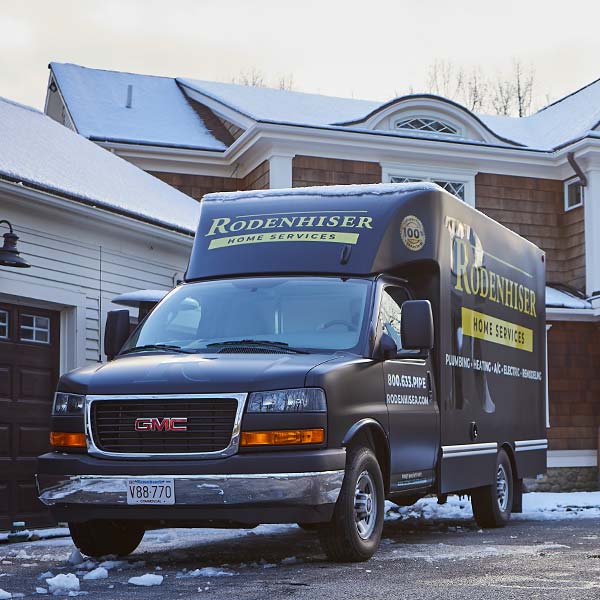



An Attic Fan: Ventilation Is Critical To Your Attic's Overall Health
Temperatures in your home's attic can reach as high as 150 degrees in warm weather, impacting both ventilation and energy costs. But with an attic fan, you can keep that heat from building to protect your attic and lower the heat gain inside your home.

While the short-term benefits of keeping your home cooler are the main reason for ventilating your attic, you'll get a secondary benefit by preserving the life of your roofing materials, especially if they're composite shingles. The asphalt backing on these shingles can weaken when exposed to extreme heat, day after day.
Depending on how much and what kind of insulation you have in the attic, heat gain can last for hours after a warm, sunny day. And everything in the attic will absorb the heat, which can radiate into your home long after the sun sets. Although all attics have vents, either ridge, gable or soffit, sometimes the venting is insufficient for the building heat to escape.
Using an attic fan, however, can help to lower the attic's temperature. Most fans have thermostatic controls that turn the fan on at 80 to 90 degrees, creating more air exchanges per hour, and cooling everything down. When the temperature in your attic is the same as the outdoor air, you'll extend the life of your roof and experience lower energy bills.
When choosing a fan, select one that turns the air over at least 10 times per hour to ensure peak benefits of using one. You'll have to know the cubic footage of your attic and base your selection on the capacity of the fan. As a general rule, your attic should have one square foot of venting for every 360 cubic feet per minute of air you need to exhaust. Work with a contractor to select the right-sized attic fan.
If you're not comfortable with do-it-yourself projects or you'd like professional assistance wiring or selecting an attic fan, contact Rodenhiser Plumbing, Heating & Air Conditioning today! We've provided HVAC services for the Route 495/128 area of Medway MA since 1928.
Our goal is to help educate our customers about energy and home comfort issues (specific to HVAC systems). For more information about other HVAC topics, download our free Home Comfort Solutions Guide.
Image via Shutterstock.com
Nice people.
Great service.
Since 1928Terms & Conditions | Privacy Policy





Read From Over 14,000 Happy Customers
-
Both Alex and Patrick were knowledgeable, courteous, and professional. They made a change that might have solved the recent problem and have structured a more complete solution. We agreed to this...

-
Mike was thorough, thoughtful and considerate. Covered their shoes before entering, surveyed my issue and provided an explanation of the services and costs. Great Job!

-
Alex did a great job providing an explanation of the services provided and went out of his way to offer assistance/advice on other issues outside of our scheduled maintenance visit.

-
Brian did an excellent job inspecting our 18-year old boiler and replacing some of the accessory hardware that needed it, he also adjusted the outgoing hot water settings for our radiators and...

-
Rodenhiser is my one stop shop!!! They take care of my HVAC, electrical, and plumbing issues & are always helpful addressing any questions I may have about the systems in my house! Everyone...

-
Chris G. and Nick V. showed up bright and early at 8am to fix my water heater issue. They were on time, polite and were able to fix an issue that has been plaguing my house for a good year. They...

Call Rodenhiser at
508-321-3089
Call Rodenhiser at 508-321-3089
When you are looking for plumbing, electrical, heating or air conditioning in the Route 495 / 128 area, you will be delighted that you called Medway MA' trusted choice since 1928.
With a total dedication to professional workmanship and excellent service, discover why families and businesses continue to trust Rodenhiser after generations of service

Trusted Plumbers
Fast, On Time
HVAC Experts
Satisfaction Guaranteed
Expert Electricians
Maintenance Plans
CONTACT RODENHISER TODAY
325 Hopping Brook Rd Holliston MA 01746.
-
Master Plumber: #10961
-
Corporate Plumbing: #2288
-
Master Electrician: #23917A
-
Electrical Business: #4804
-
Master Sheet Metal (Unrestricted): #5867
-
Corporate Sheet Metal: #641
-
Home Improvement Contractor: #188806
*Heating system check terms and conditions: Residential Only. Must reside within our service area. Offer only available to 1 unit per household additional units are at full price. Can not be combined with other offers
*Late Season Special Extra Conditions: Gas Systems only. No Discounts on oil systems. Promotional price limited to one system per home, additional systems will be charged at full price. Residential Systems only. Must reside within our service area. *For EV Charger Offer also: valid only when the system is purchased through Rodenhiser.
















